Summer advice for wood stove owners

Hi All, My name is Sune and I help to run Stovesonline – we are the Lowimpact.org network partner for things to do with wood stoves, pellet stoves, chimneys, etc. I’m new to this blog, so I thought I would kick off with a few bits of easy summer advice for stove owners. Of course if you have any questions about stoves, boiler stoves, chimneys, thermal stores then please do post them and I will answer….
Most people (at least down south) have now stopped using their stoves for the season, I know I have.
When it is not being used make sure that the air vents are left open or you can crack the door open a tad. This will give some airflow through the chimney which will help to keep everything dry. Otherwise it can come round to the heating season and you find everything rusty.
It is a good time to give it an MOT. If there is anything wrong then you have plenty of time to sort it. The first things to check are perishable bits:
- Grate – if it has one. The grate can get burnt out, especially if you are burning coal.
- Baffle plate – this is the angled bit of firebrick or metal which stops the flames going straight up the chimney. It takes a big brunt of the heat from the fire and so can burn out. Take it out and clean it – there may well be soot and deposits resting on top of it / behind it.
- Firebricks – a lot of stoves have bricks which protect the metal of the stove from the intense heat in the firebox. Check that they are intact. A little crack is fine as long as the bricks are still well in place.
- Fuel retainer – some stoves have a piece of metal at the front to stop fuel rolling out. Check that it is okay.
Next up a bit of cleaning:
- Flue pipe – clean the flue pipe which comes out of the stove with the right size flue brush. If the flue comes out of the back of the stove then there should be a tee piece – take the base off and clean out the debris that has built up. Check the seals between the stove and the flue pipe and between sections of flue pipe. Sometimes fire cement can crack and segments can fall out. Replace as needed. If there is lots coming out then think about bracing the flue pipe as it might be moving around a lot. You could also use high temperature silicone.
- Sweep the chimney. Throwing a goose down there is not really that thorough and the goose is never too chuffed about it so I suggest sweeping brushes. If you go for the standard ones then the rods double up as drain rods too.
- Clean your stove. A slightly damp cloth does the trick for me. If you use stove polish on your stove then I would get a wire brush to any rusty parts, get it nice and clean and free from dust. Then take the polish, mix some petrol with it (not sure if biofuel works, probably not but you could try it) so it is like double cream. Paint on in even strokes and let it dry. Buff it off to a nice shine. I find that this gives a better and more even finish than if you just rub on the polish direct.
- Clean the glass. I find that a slightly damp cloth dipped in some soft wood ash (with no lumps or grit in it) works really well. Rub in small circles and then a clean cloth at the end. Obviously if there are any cracks in the glass then this is when you will notice. Remember it is not normal glass in a stove!
Give it all a check over. Is it still safe? The flue pipe can get really hot – is it safe or could it set fire to something? Check where it runs near anything or where it runs through a wall or a roof. Have a look at the top of the chimney too – is there a rain cowl on top and does that need cleaning? How does the flashing look?
You’ll need to check it all before you start burning again of course. Sometimes we get a jackdaw that blocks the chimney but on the plus side gives us a massive pile of free kindling!
And of course if you haven’t already got your wood for at the least the next season sorted then chop to it….it needs a chance to dry well over the summer. I process my wood into wooden stilages and mesh sided dumpy bags. The advantage is that you don’t have to spend ages stacking logs because you just chuck them in, you can season them where you chop them by putting a simple corrugated roof over the whole lot, and moving it to your house is easy when the time comes.
Cheers
Sune
The views expressed in our blog are those of the author and not necessarily lowimpact.org's




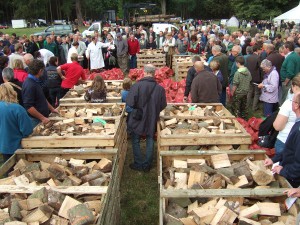 Local firewood auction & fair in your county?
Local firewood auction & fair in your county?
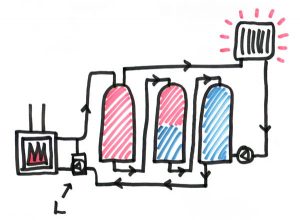 How to build a DIY thermal store
How to build a DIY thermal store
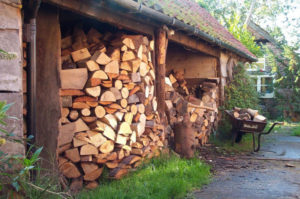 The pros and cons of burning different types of wood for heating
The pros and cons of burning different types of wood for heating
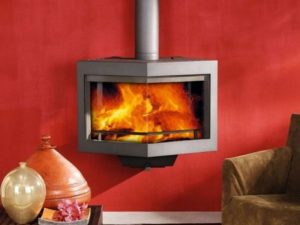 The pros and cons of second-hand stoves: what to consider before you buy
The pros and cons of second-hand stoves: what to consider before you buy
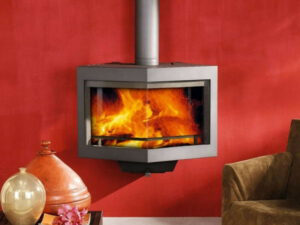 Wood stoves
Wood stoves


